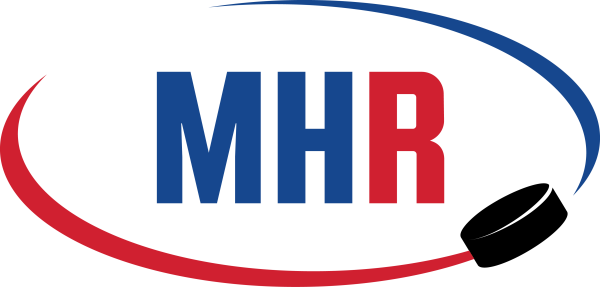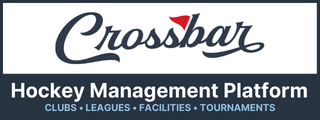
MYHockey News
Canadian Junior Hockey Return-to-Play Update
As hockey makes its return in Canada with most provinces permitting either small-group skills sessions or modified small-group game play, the top tiers of Canadian junior hockey wrestle with issues that most of the minor hockey programs don’t have to deal with and that make getting their actual seasons underway a little more challenging.
And as popular as hockey is in Canada, the health and safety of the general population are always going to be the top priorities for provincial and local government and health authorities.
“{Hockey} is a priority for us, but what my intuition tells me for the government and health, {the priority} is the safety of the people of Saskatchewan,” Bill Chow, commissioner of the Saskatchewan Junior Hockey League (SJHL) and a longtime police officer in Prince Albert, Sask., told the Rod Pedersen Show in August. “You know my background and where I come from, so I totally get that. Right now, hockey is important to me and the people I work for and with, but at the end of the day it’s just hockey. And I don’t mean to minimize that, but when we think of the bigger factors in life being work and school for the school kids and everything else that is going on and that they’re trying to figure out, sports at the end of the day is a piece of the puzzle. And they’ve got a big puzzle to put together.”
As challenging as the overall puzzle is for the provincial governments and health authorities across Canada, the obstacles facing the junior hockey leagues are no less daunting when you factor in the various jurisdictions that may house teams in any one league, the issues concerning overnight travel and mixing players from different geographic areas, potential rink restrictions and the fact that the Canadian-American border remains closed until at least Sept. 21.
The border issue not only affects leagues such as the Ontario Hockey League (OHL), Western Hockey League (WHL) and the Superior International Junior Hockey League (SIJHL), which have franchises in both countries, but also the hundreds of American players who had planned on crossing the border to play this season.
Every Canadian Hockey League (major junior) and Canadian Junior Hockey League (CJHL) Junior “A” affiliate already is looking at a substantial delay to the start of its season – except for the Quebec Major Junior Hockey League (QMJHL), which has targeted Oct. 1 to open regular-season play if provincial and health authorities will permit a full return to hockey at that time. At the moment, hockey in Quebec is restricted to modified smaller-sided games with no contact and no more than 250 spectators.
Leagues have said that they plan to begin play with or without American players if the border situation isn’t resolved, which may relegate any U.S.-based teams to playing only against each other until the border status changes. Some American player have attempted to cross the border arleady with mixed results.
With CHL major junior teams being so dependent on gate receipts – there are estimates that up to 60 percent of the operating budgets for QMJHL teams comes from ticket sales – and the towns that host those teams so dependent on the economic impact and jobs the franchises create, some have floated the argument that major junior hockey players should be considered essential workers. Whether that happens or not, at this point it seems as though the Canadian junior leagues will keep pushing forward while hoping the border opens sooner rather than later.
Here is a brief look at the start-up plans for the CHL and CJHL-affiliated leagues:
Canadian Hockey League (CHL – Major Junior)
QMJHL – As mentioned previously, the 18-team “Q” had set Oct. 1 as the hopeful start-up date for its regular season. Training camps opened Aug. 30, 172 days after the league played its last games before the COVID-19 shutdown. Camps are limited to 34 participants, and modified preseason games began almost immediately.
The league is planning for a 60-game regular-season schedule plus playoffs. Teams will compete in three divisions, including the Atlantic Division for Maritime teams as well as East and West Divisions. As of right now, no more than 250 physically distanced, mask-wearing spectators are permitted to attend games.
OHL – The OHL announced a projected regular-season start date of Dec. 1 back in early August and is hoping to play a 64-game season followed by a normal playoff slate. As of now there are no plans to relocate the U.S.-based teams (Flint, Saginaw and Erie) to Ontario to alleviate the border concerns as it is hoped that the border will be open in time for the season.
Teams will not compete in inter-conference play in hopes of creating a limited-bubble situation, and any foreign players entering Canada will be required to quarantine for 14 days before participating in team-sanctioned activities. Because the league is so dependent on ticket revenue, any limitations on attendance could cause the start of the season to be postponed to an even later date.
WHL – The WHL is fortunate to have an entire division of U.S.-based organizations, which would allow those teams to play each other in the event that the border situation is not resolved prior to the league’s projected Dec. 4 start date. The plan is to begin the campaign with divisional play only and to complete a 68-game regular season with the potential for a modified postseason.
The complicated part for the WHL is that it has franchises located in six different jurisdictions. The British Columbia and U.S. divisions will remain the same as they usually are, while teams in Alberta will make up a third division and teams from Saskatchewan and Manitoba will combine to form another seven-team division.
Canadian Junior Hockey League (CJHL – Junior “A”)
Central Canada Hockey League (CCHL) – The CCHL has established a target date of Oct. 1 for its 12 teams to begin competing in modified preseason games, pending approval of the Ontario government and provincial health authorities. The rest of September will include on- and off-ice training, skill development and player evaluations. Once the league is approved to begin preseason play it will submit a proposal to government and health authorities in hopes of establishing a regular-season start date.
Manitoba Junior Hockey League (MJHL) – The 11-team MJHL is targeting Oct. 9 as its regular-season start date. Training camps will open Sept. 18 with a 34-player limit, and each team will be permitted to play three in-province exhibition games. Players and staff members will be required to wear masks when commuting to and from the rink and for any team travel. The league’s schedule has been posted HERE.
Alberta Junior Hockey League (AJHL) – On Aug. 14 it was announced that the league would begin it’s “Developmental Season” Aug. 31 and that the start of the regular season would be postponed. Alberta currently is in Stage 2 of its return-to-play plan, which means that game play is not permitted. The league will continue to operate within Alberta’s outlined COVID guidelines and will announce a plan for its regular season and playoffs at a later time.
Quebec Junior Hockey League (LHJAAAC) – Ken FIgsby’s title of interim commissioner was removed Sept. 9 as he officially assumed the commissioner’s duties. An executive committee has been formed to address the ever-changing COVID-19 situation and the LHJAAAC’s return-to play plan.
Quebec is moving faster than the rest of Canada in terms of its return-to-play plan, so the league’s 13 teams have been in training camp and began their annual Challenge Cup preseason tournament Sept. 11 – albeit under a new format. Since 5-on-5 full-contact hockey still is not permitted, the Challenge Cup features a 4-on-4 format in which teams play six 10-minute periods. Groups of eight skaters and a goalie representing each competing team play the first three periods, with two new groups facing off for the final three frames. Ties are broken by a shootout.
The 13 teams have been split into four divisions and will play six round-robin games apiece between now and Oct. 1. The first-place teams in each division will match up in the semifinals and finals Oct. 2-4, with the winning team guaranteed a spot in the league’s 2021 playoffs regardless of where it finishes during the regular season. Up to 250 spectators are permitted to watch each game.
An Oct. 12 start date has been set for the league’s regular season as long as Quebec has moved from Phase 5 to the final phase of its return-to-play plan by then.
Maritime Hockey League (MHL) – The 12-team MHL has moved its regular-season start date from Oct. 2 to Oct. 20, it was announced Sept. 1. The start date is dependent upon provincial guidelines and restrictions as of that date, and the league’s Board of Governors voted to reduce the season from 52 to 44 games. More details and the final schedule will be announced at a later date.
Northern Ontario Junior Hockey League (NOJHL) – This 12-team circuit is planning to begin its regular season, pending approval from provincial government and health authorities, Oct. 15. Teams currently are operating under Phase 1 guidelines, which permit skills and drills practices that abide by Phase 1 protocols as well as on- and off-ice conditioning.
A move to Phase 2 would include a return to competition, with full games permitted and the announcement of the league schedule as approved by the Government of Ontario and the Ontario Hockey Federation.
Ontario Junior Hockey League (OJHL) – The OJHL had hoped for an early Sept. regular -season start, but the league still finds itself in Phase 1, similar to the NOJHL. A Return to the Rink Committee has been created by the league, which right now is permitted to hold modified scrimmages, on- and off-ice conditioning sessions, team-tactics sessions and player evaluations.
As with the NOJHL, a move to Phase 2 would allow for full games and a regular-season schedule to be announced. The league is hoping for a mid-October or November start to its season and has the ability to vary the schedule length, divisional alignment and playoff format based on when play actually gets underway.
As with the NOJHL, a move to Phase 2 would allow for full games and a regular-season schedule to be announced. The league is hoping for a mid-October or November start to its season and has the ability to vary the schedule length, divisional alignment and playoff format based on when play actually gets underway.
SJHL – Originally scheduled to begin play Sept. 11, the eight-team SJHL then moved the start date to Sept. 25 and is now hoping to get started Oct. 9. Commissioner Chow has vowed to continue moving the date back as necessary to comply with any COVID restrictions and ensure a full season of play. He is awaiting approval of the Oct. 9 start date.
“We’ll see what comes out from the government and health authorities and then see what direction we will go,” he said.
SIJHL – The SIJHL announced a Nov. 14 start date on Aug. 1 with the goal of ensuring that its seven teams, located in the U.S. and Canada, can complete a full, uninterrupted season. The start date is dependent on the border opening as well as state and provincial guidelines and restrictions at that time. Teams are allowed to open their training camps Sept. 14.

